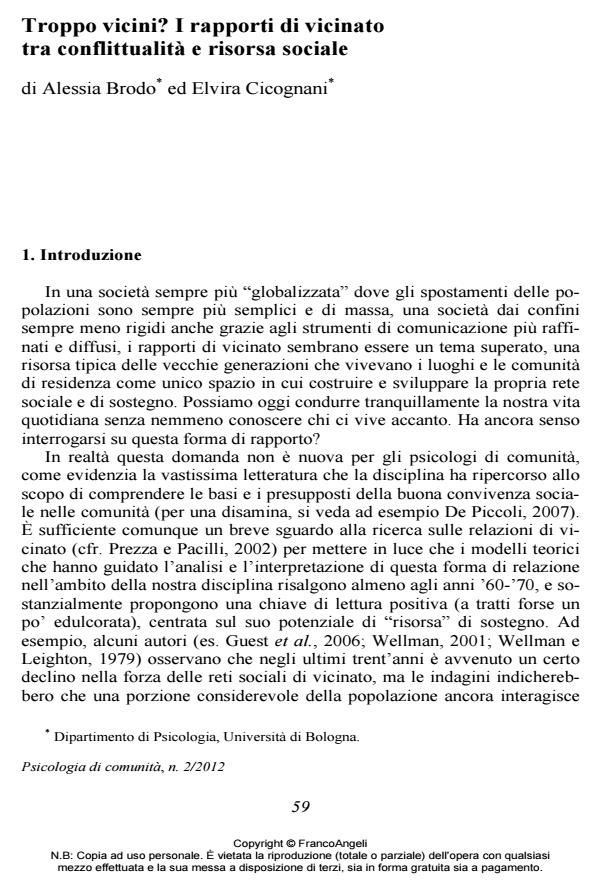Troppo vicini? I rapporti di vicinato tra conflittualità e risorsa sociale
Titolo Rivista PSICOLOGIA DI COMUNITA’
Autori/Curatori Alessia Brodo, Elvira Cicognani
Anno di pubblicazione 2013 Fascicolo 2012/2
Lingua Italiano Numero pagine 11 P. 59-69 Dimensione file 349 KB
DOI 10.3280/PSC2012-002006
Il DOI è il codice a barre della proprietà intellettuale: per saperne di più
clicca qui
Qui sotto puoi vedere in anteprima la prima pagina di questo articolo.
Se questo articolo ti interessa, lo puoi acquistare (e scaricare in formato pdf) seguendo le facili indicazioni per acquistare il download credit. Acquista Download Credits per scaricare questo Articolo in formato PDF

FrancoAngeli è membro della Publishers International Linking Association, Inc (PILA)associazione indipendente e non profit per facilitare (attraverso i servizi tecnologici implementati da CrossRef.org) l’accesso degli studiosi ai contenuti digitali nelle pubblicazioni professionali e scientifiche
I conflitti che nascono nell’ambito delle relazioni di vicinato rappresentano un problema che pone diverse "sfide" agli psicologi di comunità interessati a promuovere la buona convivenza fra i cittadini, obiettivo centrale delle politiche di inclusione sociale e di contrasto alla povertà e alla marginalità sociale. Nel presente contributo, dopo aver discusso brevemente le ricerche sulle relazioni di vicinato, viene descritto un intervento di mediazione sociale realizzato nel territorio di Cesena volto a gestire e prevenire i conflitti, presentando i dati di una ricerca effettuata per valutare i bisogni del territorio e l’impatto dell’intervento effettuato.
Parole chiave:Rapporti di vicinato, conflitto, mediazione sociale, interventi di comunità, rete sociale, sostegno.
Alessia Brodo, Elvira Cicognani, Troppo vicini? I rapporti di vicinato tra conflittualità e risorsa sociale in "PSICOLOGIA DI COMUNITA’" 2/2012, pp 59-69, DOI: 10.3280/PSC2012-002006